.jpg)
April 2021 saw the release of the final coin in The Royal Mint's highly successful Queen's Beasts series. Featuring the ten heraldic creatures that starred on the earlier single-beast issues, the 2021 Queen's Beasts Completer Coin is a stunning crown on a remarkable run.
This quintessentially British collection has reshaped the market for modern bullion and collector's coins and here at The Britannia Coin Company we are already nostalgic for the regular releases we have seen over the last five years.
Benefitting from outstanding designs by Jody Clark, a comprehensive range of metals, finishes and weights (not to mention rising gold and silver prices), the Queen's Beasts were bound to be popular. Here's what you need to know about these unforgettable coins and why you should buy today.
Britain's Longest-Reigning Monarch
On 9 September 2015, Elizabeth II surpassed the reign of her great-great-grandmother, Queen Victoria, to become the longest-reigning British monarch. In a unique celebration of her 60 plus years on the throne, The Royal Mint announced the Queen's Beasts collection in early 2016.
Initially the press releases teased a bullion line, joining the Sovereign, Britannia and Lunar in the Mint's roster of major investment coins. Proof editions were first offered in 2017. Each coin in the initial ten-coin series featured a heraldic beast, tied to Her Majesty's royal lineage.
What is heraldry? Heraldic images like coats of arms use recognisable motifs to identify individuals, families and nations. Heraldry is the study of these symbols which date back to the middle ages. Today, heraldry appears in business logos and on coins, repurposing old designs for new purposes.
The final 'completer' coin in the series, released earlier this year, was adorned with not just all ten of the Queen's Beasts but also two portraits of the Queen. Always pushing the limits of minting technology, The Royal Mint presented this final release on an enormous 10 Kilogram gold coin as well as smaller gold, silver and cupronickel editions.
Royal Supporters at the 1953 Coronation
The Queen's Beast's collection was inspired by a group of ten, six-foot tall statues, created by English sculptor, James Woodford. Commissioned by the British Ministry of Works for the Queen's 1953 Coronation, they guarded the temporary west annex to Westminster Abbey during the ceremony.
The sculptures took the form of the real and mythological creatures that appear on either side of the Coats of Arms of British royal and noble houses. Called 'Royal Supporters' these beasts are heraldic symbols with complex histories, tied to more than a millennium of monarchic traditions.
Woodford's beasts are now displayed at the Canadian Museum of History. Stone replicas can be seen outside the Palm House at Kew Gardens. An enduring image of the coronation, the Queen's Beasts have appeared on commemorative tableware, postage stamps and now The Royal Mint coins.
.jpg)
Five of the Queen's Beast sculptures made for the 1953 Coronation, on display in Quebec. Photo by shankar s via Wikimedia Commons. CC BY 2.0.
Did you know? The 1953 coronation creatures that inspired the Queen's Beasts series were based on another group of statues, crafted for King Henry VIII and his third wife, Jane Seymour? You can still see these older sculptures on a visit to Hampton Court Palace.
Dynamic Designs by Engraver Jody Clark
The Royal Mint picked a member of their in-house design team to craft the Queen's Beasts series. Known for his effigy of Her Majesty, the fifth definitive portrait for her coinage, Jody Clark is in the unusual position of having his engravings on both sides of the coins in the Queen's Beasts collection.
Each of Clark's Queen's Beasts designs features an animal caught in motion. Fantastical or not, the creatures are realistic and highly detailed. Their finely wrought fur and scales stand in contrast to the graphic quality of their shields, depicting badges and arms of Her Majesty's illustrious ancestors.
Discussing the inspiration behind his engravings, Clark said:
'I've always been interested in fantastic beasts; you can ask my mum! I think most children love fairy tales and stories about lions, dragons and unicorns; they've got a timeless appeal.'
Fantastic Beasts And Where To Find Them
Each of the Queen's Beasts has a royal story to tell. Some of the beasts and the shields they clutch are instantly recognisable, while others are more obscure, the province of historians and fantasy novelists. Here's a quick who's who of the creatures (great and small) and their history.
· The Lion of England
A symbol of courage and strength, the lion first became associated with English royalty in the middle ages, famously appearing on Richard the Lionheart's great seal: the earliest documented royal coat of arms. The first of the Queen's Beasts to be unleashed, the roaring lion rests a paw on the quartered arms of the United Kingdom which, recursively, includes the three lions of England.
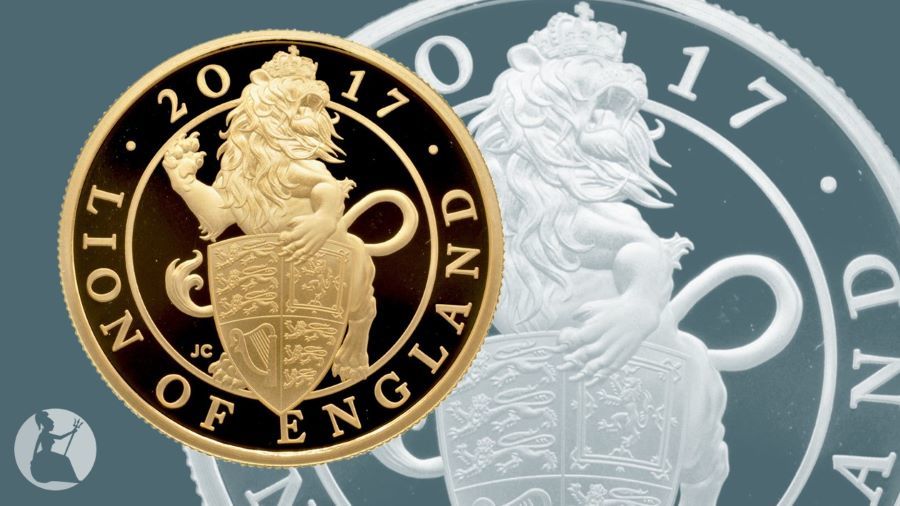
Have a look at The Queen's Beasts : The Lion of England - 2017 UK Quarter-Ounce Gold Proof Coin.
· The Unicorn of Scotland
Legend says that the Scots choose the unicorn as their emblem because the horned beast was a natural enemy of the lion: the symbol of their old enemy, the English. After the 1707 Act of Union, the unicorn joined its rival on the arms of the United Kingdom. On this Queen's Beasts coin, the rearing unicorn is gorged (collared) and chained to a shield that bears the royal arms of Scotland.

Get more information on The Queen's Beasts : The Unicorn of Scotland - 2017 UK One Ounce Gold Proof Coin.
· The Red Dragon of Wales
The Y Ddraig Goch (red dragon) has been associated with Wales since the sixth-century. The snarling serpent that stars on this coin curls its tail around the coat of arms of Llywelyn ap Gruffudd, the last native Prince of Wales before its conquest by English King Edward I. Later, during the reign of the Tudor monarchs, this Queen's Beast was used as a supporter in the English Crown's coat of arms.
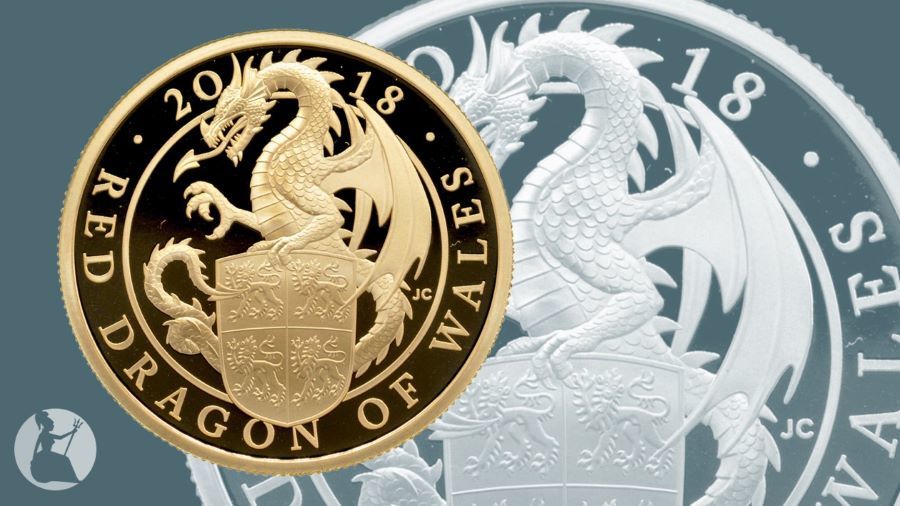
We've got a The Queen's Beasts : The Red Dragon of Wales - 2018 UK One Ounce Gold Proof Coin in stock now.
· The Black Bull of Clarence
While the dragon was associated with the House of Lancaster-aligned Tudors, the black bull was a symbol of their adversaries: the Yorkists. It was used by the last York kings, Edward IV and Richard III, to signify their royal descent through the bull-like Lionel of Antwerp, 1st Duke of Clarence. The royal arms as they looked during the Wars of the Roses accompany the raging Queen's Beast on this coin.
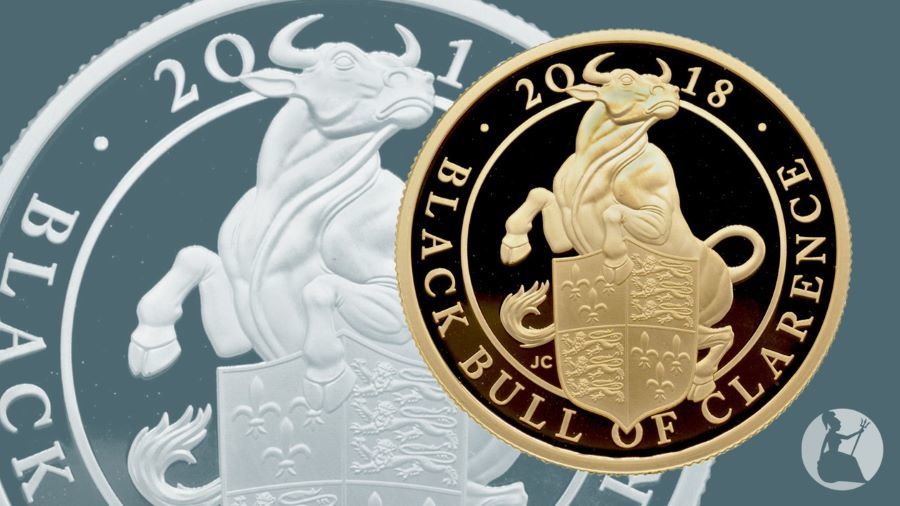
There's more information on The Queen's Beasts : The Black Bull of Clarence - 2018 UK Quarter Ounce Gold Proof Coin here.
· The Falcon of the Plantagenets
The falcon was another symbol associated with the House of York, particularly Plantagenet King Edward IV whose badge, featured on this addition to the Queen's Beasts collection, depicts a falcon perched atop a golden fetterlock (a type of shackle). Hunting with birds of prey was an elite sport in medieval England, so choosing this beast as a personal emblem suggested nobility and prowess.
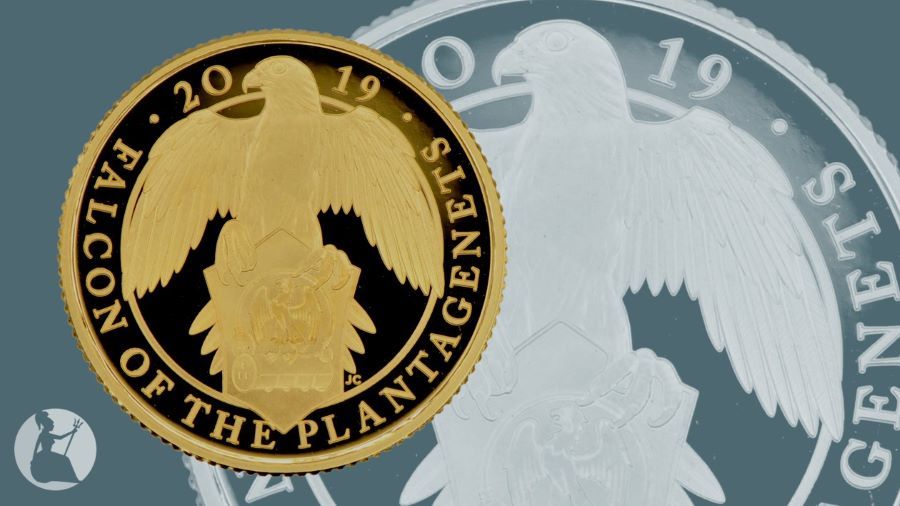
Purchase The Queen's Beasts : The Falcon of the Plantagenets - 2019 UK Quarter Ounce Gold Proof Coin today.
· The Yale of Beaufort
The yale became linked with the British monarchy through Henry VII's mother, Lady Margaret Beaufort, whose family used the spotted, goat-like mythological creature in their arms. As Henry claimed the crown via his Beaufort ancestors, he adapted their beast and their badge – a portcullis, seen on this coin's escutcheon (shield) – into the heraldic imagery of his house: the Tudors.
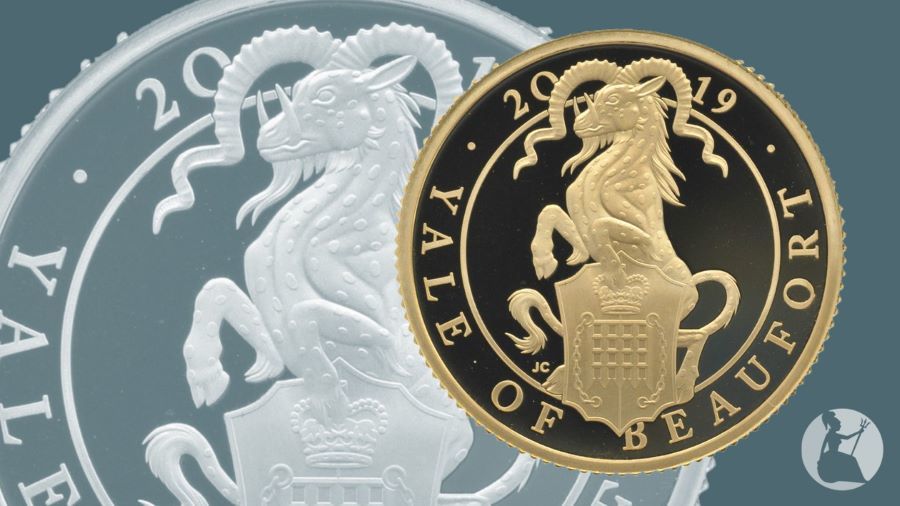
Find out more about The Queen's Beasts : The Yale of Beaufort - 2019 UK Quarter Ounce Gold Proof Coin by clicking the link.
· The White Lion of Mortimer
Richard III, who Henry VII defeated at the Battle of Bosworth Field, claimed royal descent through another grand lady: Anne de Mortimer. Her family's white lion is seen in profile on this coin, one paw resting on the shield which shows a white rose, encircled by a golden sun: yet another symbol linked to the House of York. Unlike the Lion of England, this Queen's Beast is uncrowned.
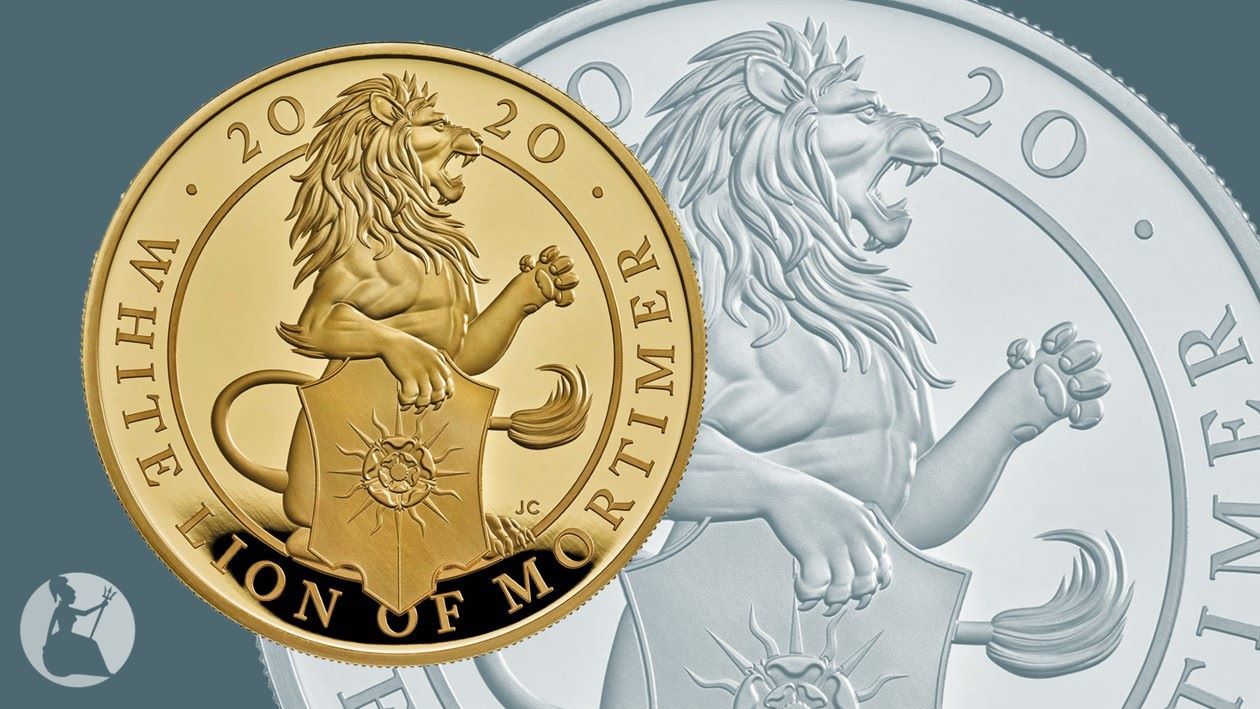
· The White Horse of Hanover
While other coins in the Queen's Beasts series harken back to the middle ages, the white horse trotted in during the eighteenth-century. The first Hanoverian King, George I co-opted the German Sachsenross (Saxon steed) into the British heraldic stable, leading to a profusion of pubs named in its honour. The nag rears over a shield showing the royal arms as used between 1714 and 1801.
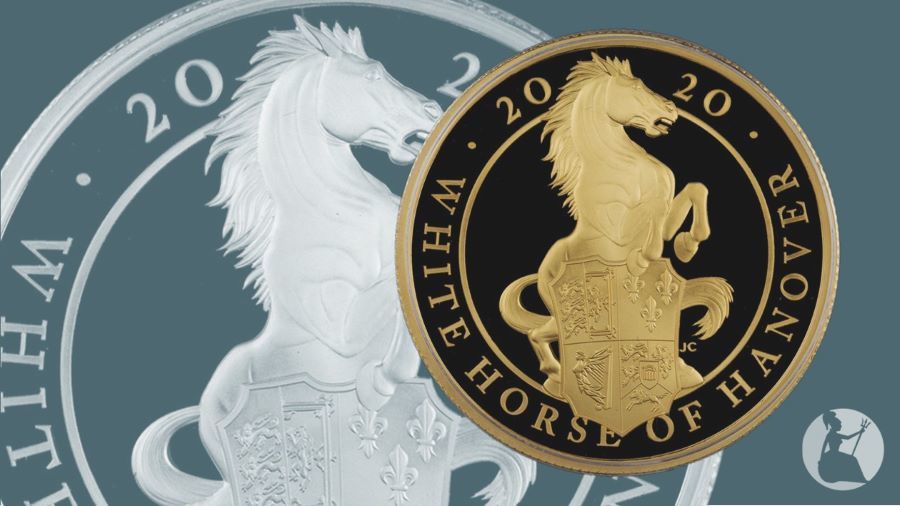
Interested in the White Horse of Hanover? Have a look at a The Queen's Beasts : The White Horse of Hanover - 2020 UK Five Ounce Gold Proof Coin : NGC Graded PF70.
· The White Greyhound of Richmond
Returning to Wars of the Roses, the white greyhound, its depiction here collared but unleashed, was associated with both Yorkists and Lancastrians, connoting loyalty and vigour. Henry VII adopted the dog to indicate his descent from both houses, reinforcing his right to rule. A crowned Tudor rose, the defining motif of the dynasty Henry brought to power, is emblazoned on this coin's shield.

The Queen's Beasts : The White Greyhound of Richmond 2021 UK One Ounce Gold Proof Coin is in stock right now.
· The Griffin of Edward III
With the body of a lion and the head and wings of an eagle, the griffin was said to be both powerful and intelligent, known for guarding treasure: a fitting subject for a coin. The Griffin of Edward III coin shows the badge of the House of Windsor, clutched in the beast's talons. It depicts the Round Tower of Windsor Castle – birthplace of Edward III who used the griffin on his private seal.
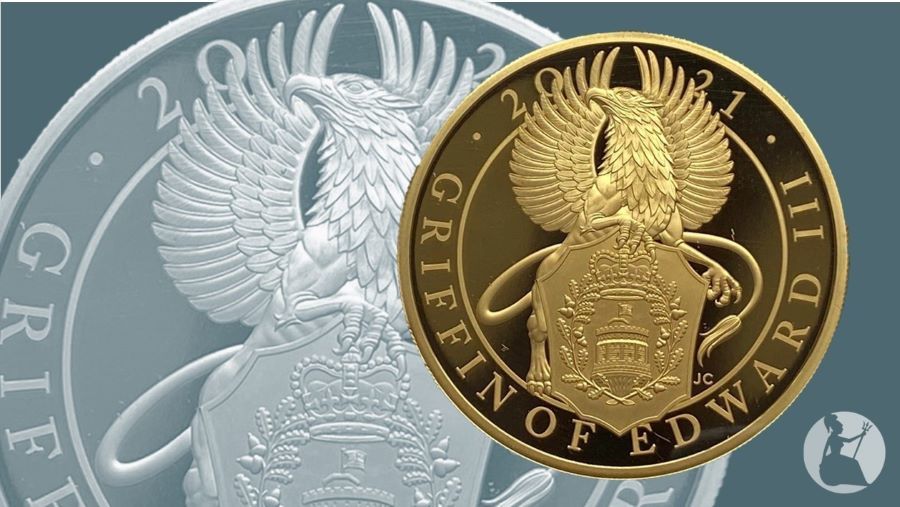
Order a The Queen's Beasts: The Griffin of Edward III - 2021 UK Five Ounce Gold Proof Coin while stocks last.
· The Completer Coin
This final coin in the Queen's Beasts series incorporates the ten heraldic beasts that featured on the previous releases, encircling a small portrait of Her Majesty the Queen. The reverse legend reads 'THE QUEEN'S BEASTS – 2021'.

Choose between the The Queen's Beasts Completer Coin : 2021 One Ounce Gold Proof and The Queen's Beasts Completer Coin : 2021 Ten Ounce Silver Proof.
Proof v. Bullion Queen's Beasts Coins
The Royal Mint has released both proof and bullion versions of all eleven coins in the Queen's Beasts series. While the creatures remain the same, there are differences in the weight, denomination and precious metal options available, as well as minor design variances. The order of release also differs.
Bullion Queen's Beasts single-beast coins are visually characterised by a reverse background field reminiscent of chainmail. The artist's initials, JC, are presented below the shield. The inscription includes the weight and purity of the coin. Queen's Beasts bullion coins are available in gold, silver and platinum.
Proof standard Queen's Beasts coins display a high-shine background, contrasting with the subtle detail of the immaculately struck designs. The artist's initials appear inside the central ring of the reverse. Fine gold and silver proof coins as well as BU pieces have been minted in various weights.
Collectible Investment Pieces
The Queen's Beasts has been great success for The Royal Mint. It is hard to quantify why exactly the series has proved so popular but we put it down to the regular releases and the wide range of options for buyers of any budget to choose from. And that's to say nothing of the incredible artwork.
However, with maximum mintages of most of the proof coins decreasing with every release, it may prove a challenge to get hold of the some of the later coins in future. This is particularly true of the one kilogram and five ounce gold proof Queen's Beasts that were only struck in double digits.
Outside of their value to collectors and fans of the royal family, coins in the Queen's Beasts series have also benefitted from rising bullion values, especially for gold, since the first Lion of England pieces were released in 2016. Our advice is to snap up the limited number that are still available.
Frequently Asked Questions
The Queen's Beasts are a collection of coins aimed at collectors and investors, issued by The Royal Mint since 2016. Inspired by the heraldic beasts that feature on the coats of arms of British royal and noble houses, coins in the series are a unique celebration of the Crown's long history.
Eleven designs are available in The Royal Mint's Queen's Beasts series, the first ten representing a different heraldic beast associated with the British monarchy. A limited range of silver and gold proof editions are availble now via The Britannia Coin Company.
All eleven reverses for coins in The Royal Mint's Queen's Beasts series were crafted by Jody Clark. He is in the unusual position of having his work on both sides of coins in this series as he is also responsible for the fifth definitive portrait of Elizabeth II that features on the obverse of all Queen's Beasts coins.
The Britannia Coin Company stocks gold proof coins from The Royal Mint's sought-after Queen's Beasts series. Gold proof coins in the series have been minted in 10 Kilogram, 1 Kilogram, 5 Ounce, 1 Ounce and One Quarter Ounce editions. Silver proof Queen's Beasts coins are also available.
The Queen's Beasts series was inspired by the real and mythological animals that feature in the coats of arms of British royal and noble houses. Together they symbolically represent Her Majesty the Queen's lineage and the famous families that drove British history.
The Royal Mint released bullion coins in the Queen's Beast series before they released proof versions and the order substantially differed. The first coin for both the proof and bullion collections was the Lion of England though the design and inscription for each line varied slightly.
The Royal Mint's Queen's Beasts series was inspired by a series of ten heraldic statues that guarded Westminster Abbey during Her Majesty the Queen's 1953 coronation. Designed by sculptor James Woodford, the statues took the form of real and mythological animals associated with the Crown.
The Royal Mint released bullion and proof versions of all the coins in the Queen’s Beasts series, including the Completer. The bullion versions are characterised by a chain-link design in the background field while proof coins boast a plain field and a sharper finish all round.
Prices for early coins in the Queen’s Beasts series have increased significantly in the short years since their release and we anticipate that the same will be true of the Completer coin. Gold proof Queen’s Beasts coins were issued in the smallest numbers and are, as such, most in demand.
Released in early 2021, the Queen’s Beasts Completer is the final release in The Royal Mint’s ground breaking series. Featuring all ten beasts that were depicted on the earlier coins, the Completer coin has been issued in gold proof and silver proof, both available now via The Britannia Coin Company.

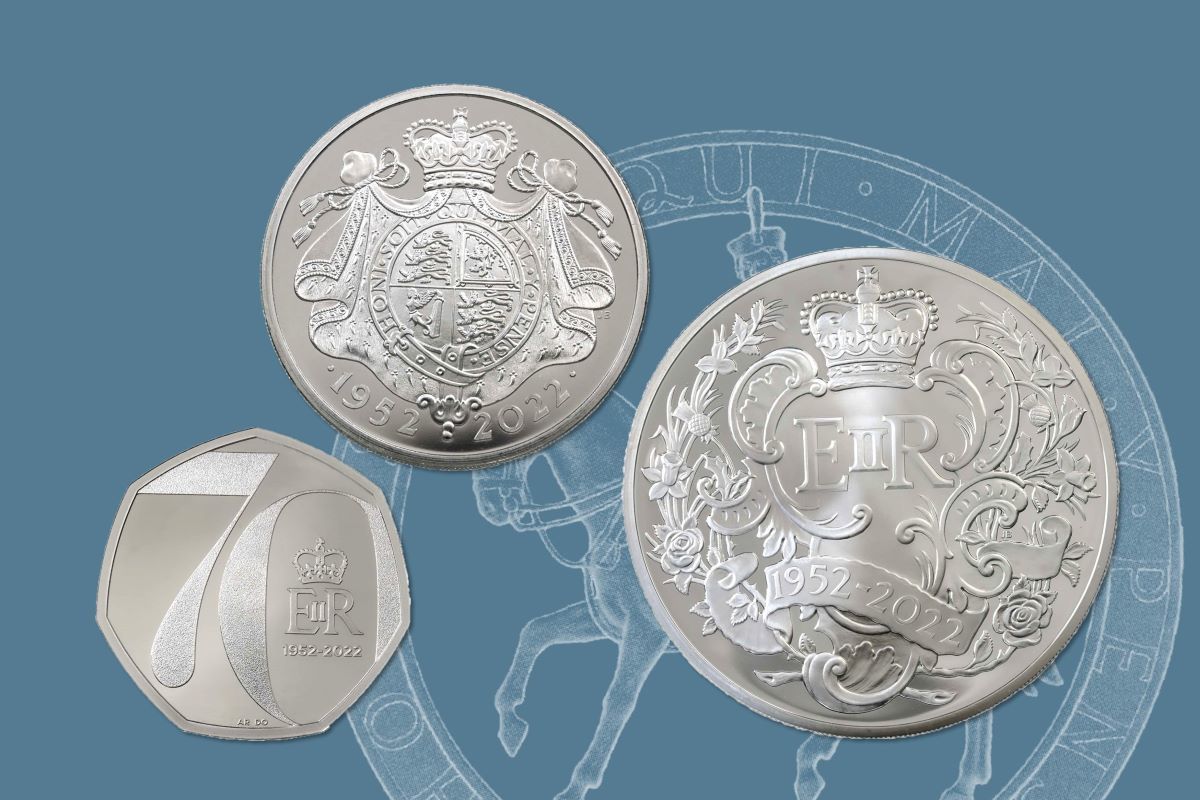
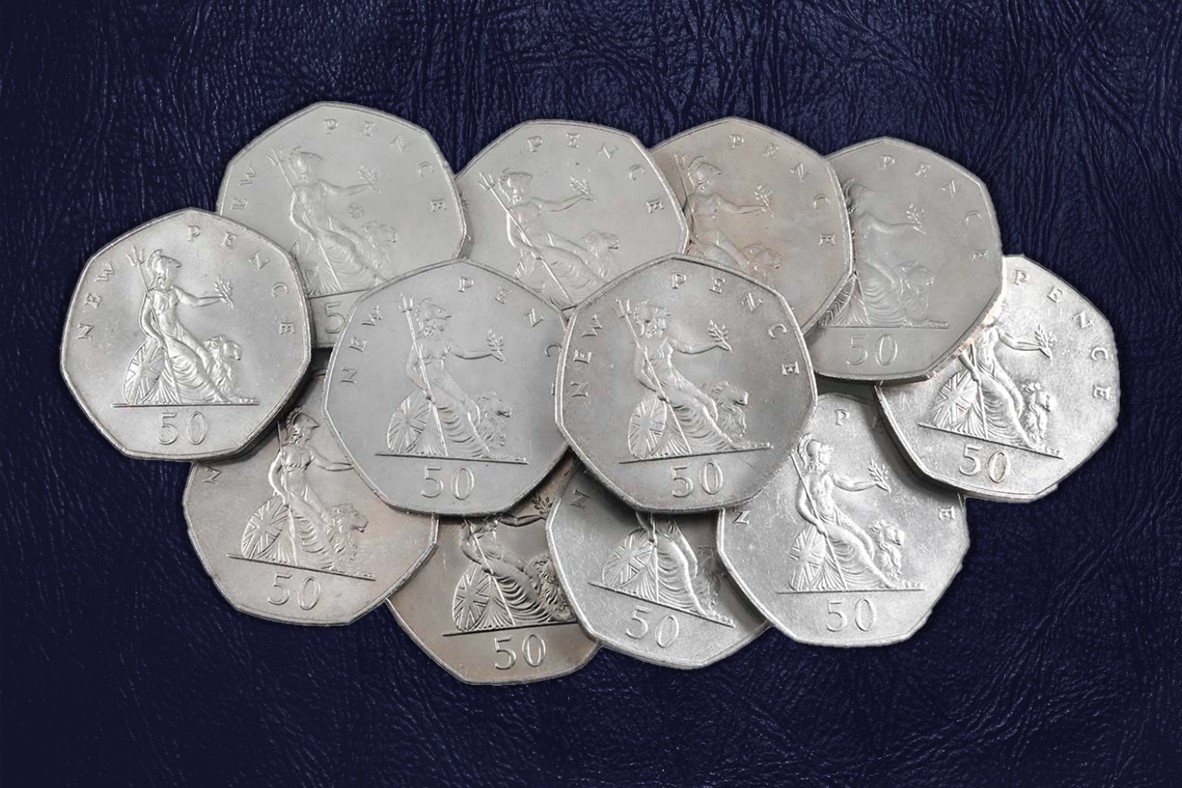
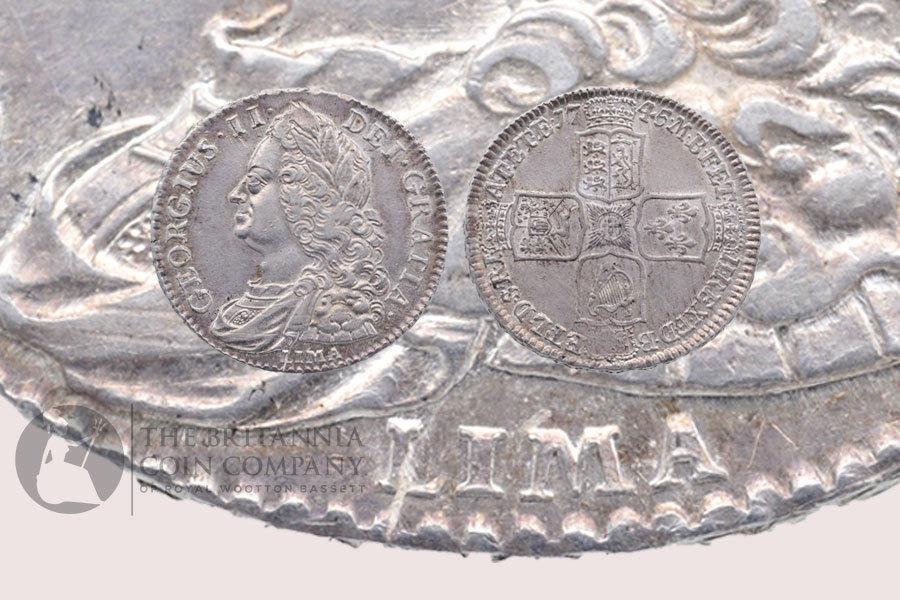
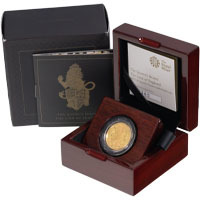

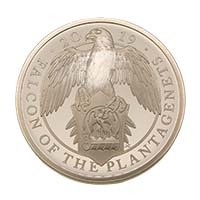

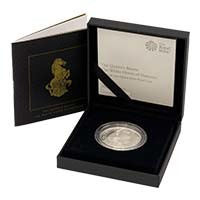
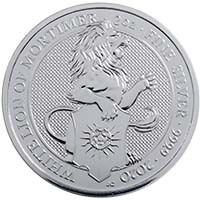

![2021 Queen's Beasts Completer Silver Two Ounce [UK21QBS2]](/images/product/UK21QBS2-2021-queens-beasts-completer-silver-proof-two-ounce@200.jpg)
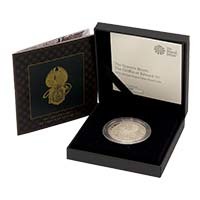
.png)
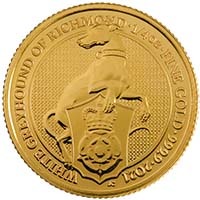

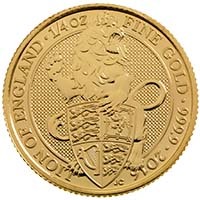
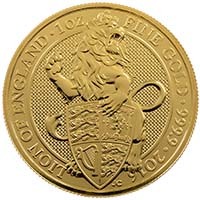

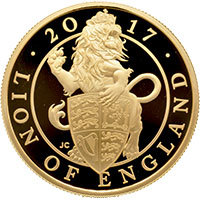

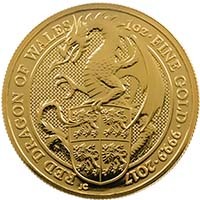

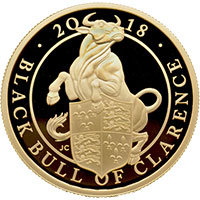
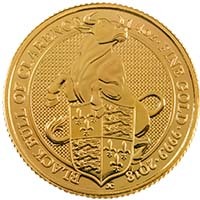

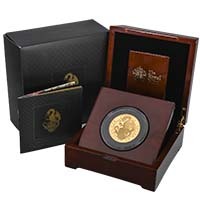
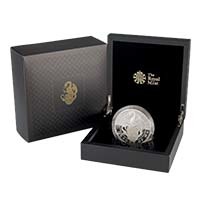
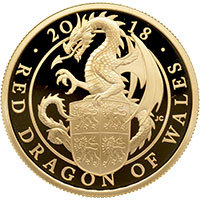

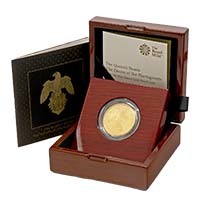
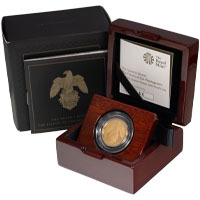
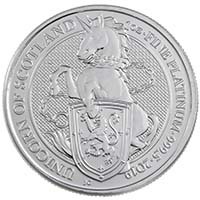
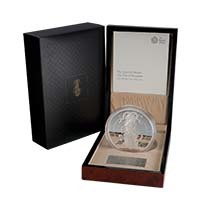

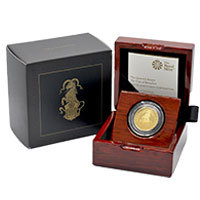
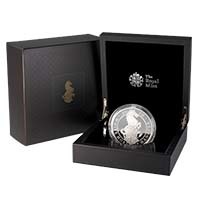
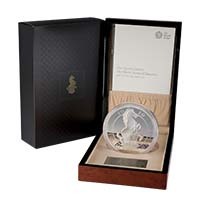
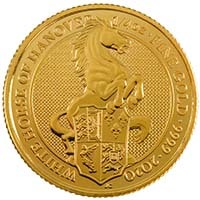
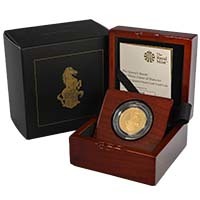


.png)
.png)
.png)

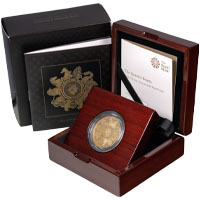
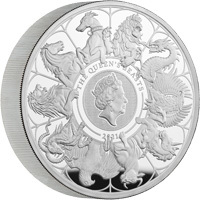
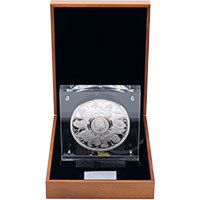
.png)
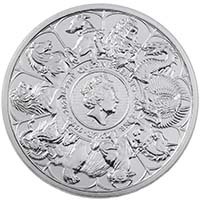



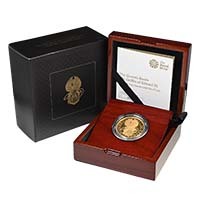
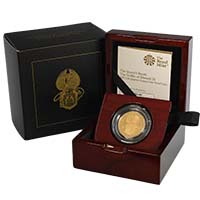
.jpg)
.png)

